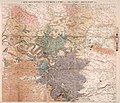
Size of this preview: 702 × 600 pixels. Other resolutions: 281 × 240 pixels | 562 × 480 pixels | 899 × 768 pixels | 1,199 × 1,024 pixels | 2,397 × 2,048 pixels | 14,990 × 12,807 pixels.
Original file (14,990 × 12,807 pixels, file size: 68.17 MB, MIME type: image/jpeg)
File history
Click on a date/time to view the file as it appeared at that time.
| Date/Time | Thumbnail | Dimensions | User | Comment | |
|---|---|---|---|---|---|
| current | 20:41, 19 January 2020 |  | 14,990 × 12,807 (68.17 MB) | Paris 16 | |
| 20:35, 19 January 2020 |  | 14,990 × 12,807 (107.12 MB) | Paris 16 | User created page with UploadWizard |
File usage
The following pages on the English Wikipedia use this file (pages on other projects are not listed):
Global file usage
The following other wikis use this file:
- Usage on fr.wikipedia.org